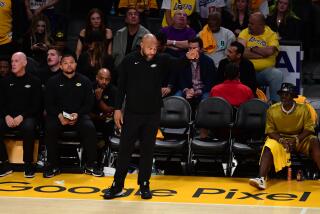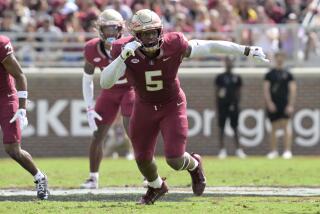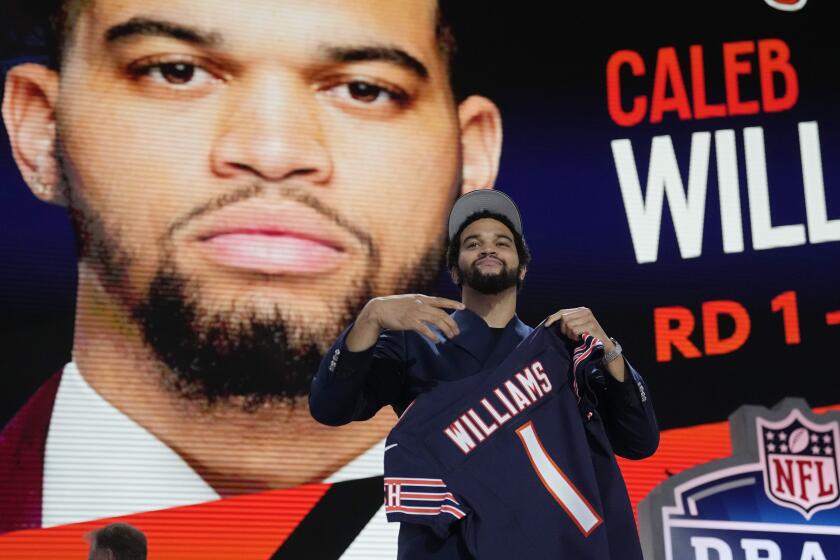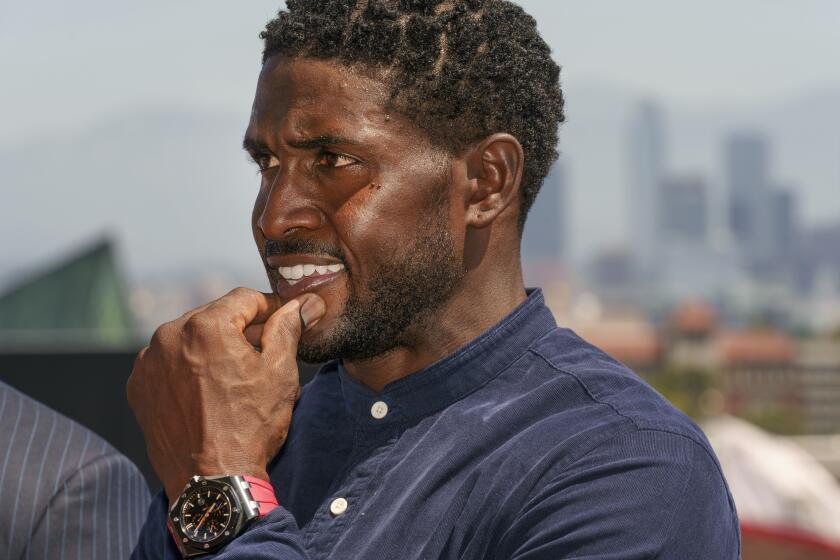Oakmont’s U.S. Open course is too hard to love, too good to hate

Geoff Ogilvy, the Australian who is the most eloquent of golfers, had the perfect description of Oakmont Country Club.
“We really should hate it,” he said, “because it’s so hard. But that’s impossible, because it’s so good.”
Oakmont, hosting a record ninth U.S. Open that begins Thursday, is a guilty pleasure for the U.S. Golf Assn. and fans of the game. In the Steel City, it allows us to sit in our comfy chairs and smirk as the best players in the world sweat and toil like weekend duffers.
The greens are as slick and sloping as those at Augusta National. Its thick, juicy rough is as gnarly as anywhere in the world. With nearly 14,000 trees on the course chopped down over the last 20 years, there are blind shots aplenty. If grass grew on the moon, this is what it’d look like.
Oh, and there are the bunkers — 210 of them, including the infamous Church Pews. You could count it as one massive bunker or 14, because it’s divided by 12 large parking blocks of grass.
“When you start to think about the U.S. Open and the draconian nature of the setup and the stars that it produces,” said Golf Channel’s Brandel Chamblee, “it’s a constant tug of war between apprehension and awe.
“And there really aren’t many better examples in the world of golf than Oakmont when it comes to those two.”
In coming from behind on Sunday to prevail by one shot over Tiger Woods and Jim Furyk in 2007, Argentina’s Angel Cabrera is Oakmont’s last Open champion, and he finished at five-over par.
Ogilvy predicted that anywhere between three over and six over par will be the winning total come Sunday, though that will be largely dependent on how much rain falls to soften up Oakmont. The bulk of the rain is supposed to arrive Thursday, which should give the players an early breather.
Still, Ogilvy said, “There might be some under-par scores shot out there on Thursday and Friday, but by Sunday, I don’t think we’ll see any.”
The beauty of Oakmont is how little the USGA has to do to alter it for the U.S. Open. The country club members like to brag that they play a major championship course every day of the week.
“I think it’s accomplishes the goal that the members want, which is to have the hardest golf course in the world or America,” Phil Mickelson said Wednesday. “I think there’s no reprieve off the tee; there’s no reprieve into the greens; there’s certainly no reprieve on the greens.”
The one difference from past Opens is the rough, and though it gets gradually deeper away from the fairway, it’s so consistently thick that even the strongest of players will have to take a mighty swipe to get an approach anywhere close to the green.
“I don’t know what kind of chemicals they put in that grass, but it’s growing,” said Ernie Els, who won the 1994 U.S. Open at Oakmont in a playoff after finishing at five-under 279.
That’s a 10-shot difference relative to Cabrera, and Els contends that strictly has to do with the rough.
“We could move the ball around,” Els said of ’94. “It was almost more fun to play that way because you could get the ball to run towards the green.”
Oakmont’s superintendent, John Zimmers, had said he’d like to see players have a chance to go for the green: “We don’t want goofy golf.” But it remains to be seen whether that’s going to be possible.
The players — so unaccustomed to doing anything but banging a driver as hard as possible — are preaching that they’ll be playing a lot more irons off the tee. Mickelson said the over-under for his use of drivers is four per round.
“The tee shot is important on every hole. That’s magnified this week,” Mickelson said.
Imagine Augusta National with U.S. Open rough, and that’s what you get at Oakmont. First, the golfers have far more control of the ball hitting from the tight lies in the Masters and, if they miss, they have another tight lie from which to putt or chip.
At Oakmont, a slight miss may flow off the green and into three inches of rough, leaving a wholly unpredictable next shot. Mickelson said it is an absolute must to keep the ball below the hole.
Parents, cover the kids’ ears. There will be cursing,.
“Oakmont doesn’t reward near-perfect shots,” Zimmers reasoned.
It all adds up to what likely will become a test of the mind’s resolve more than anything else.
Said Day, who has two runner-ups in the U.S. Open, “If you’re going to have a bad attitude, you might as well not even tee it up that week because you probably won’t play good anyways. That’s just one less person you have to worry about at the end of the week.”
tod.leonard@sduniontribune.com
More to Read
Get our high school sports newsletter
Prep Rally is devoted to the SoCal high school sports experience, bringing you scores, stories and a behind-the-scenes look at what makes prep sports so popular.
You may occasionally receive promotional content from the Los Angeles Times.






